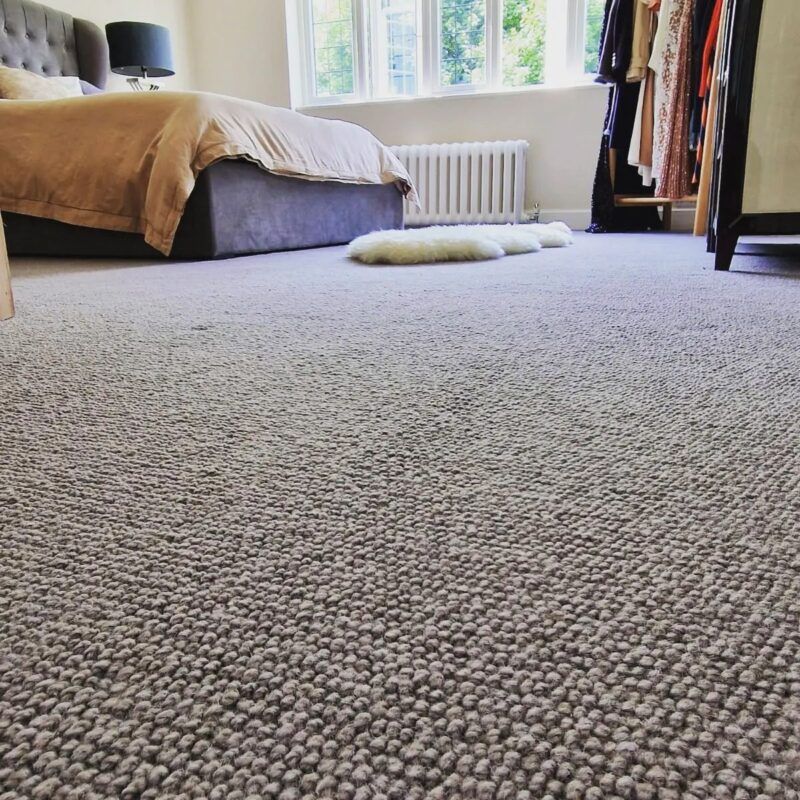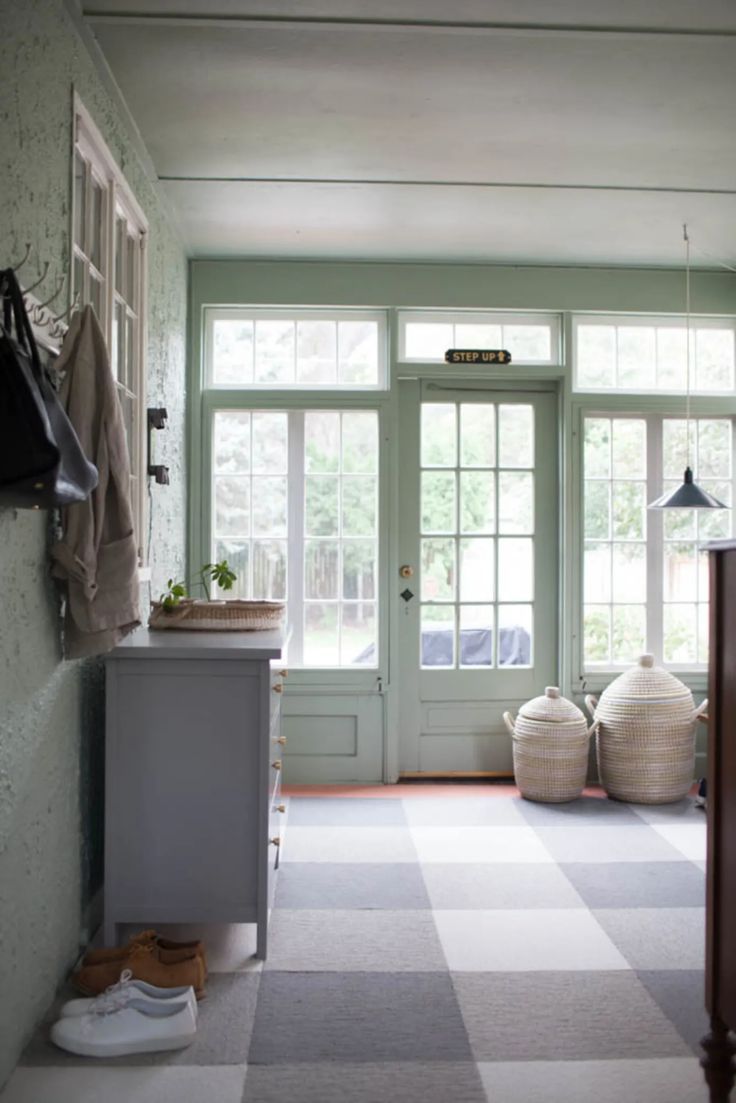Radiant Heated Flooring Installation
We install custom radiant heating systems under your floors that provide exceptional comfort by warming the surfaces you touch most. This type of heating is becoming increasingly popular in the Sacramento area for its efficiency and the consistent warmth it provides.
You'll love how radiant floor heating works - instead of blowing hot air around your home, it gently warms the floor itself. This creates a cozy feeling underfoot and heats your home from the ground up. Our team at Sacramento Flooring Company tailors each installation to meet your specific needs, ensuring you get the perfect system for your space.
We've been serving the Sacramento community with quality flooring solutions that combine comfort and efficiency. Our radiant heating installations can work with various flooring types and are designed to provide reliable warmth while potentially reducing your energy bills. Many of our customers also appreciate that these systems can create a better environment for those with allergies by eliminating the air circulation that traditional heating systems require.
Installation Process
We handle every aspect of the installation with precision and expertise.

1. Initial Consultation and System Design
We begin by scheduling an in-home consultation to assess your specific needs. During this visit, our technicians measure your space and evaluate the existing flooring, subfloor condition, and current heating system. This helps us determine the best radiant heating solution for your home.
2. Installation for Radiant Flooring
Our installation process begins with proper preparation of your subfloor. We remove existing flooring if necessary and ensure the surface is clean, level, and structurally sound. For hydronic systems, we install insulation panels to prevent heat loss through the subfloor.
3. Post-Installation Testing and Project Completion
After installation, we conduct thorough testing of your radiant heating system. This includes pressure testing for hydronic systems to check for leaks and electrical testing for electric systems to verify proper connectivity and resistance values.
4. Aftercare and Maintenance
We recommend checking your system's pressure gauge at least once a month during heating season. The ideal pressure range is typically between 12-15 PSI for most residential systems. If you notice pressure dropping frequently, it may indicate a small leak that needs attention.
5. Troubleshooting Common Issues
Cold spots in your floor often indicate air trapped in hydronic systems. This can usually be fixed by bleeding the system at designated valves. We can guide you through this process over the phone.
6. Professional Repair Services
Our repair specialists are factory-trained on all major radiant heating brands and components. We carry replacement parts for most systems and can typically complete repairs in a single visit.
Choosing a Radiant Heated Flooring System
Selecting the right radiant heating system for your floors involves understanding the available technologies, compatibility with your flooring materials, and your specific heating needs. The right choice will balance comfort, efficiency, and cost.
Electric vs Hydronic Radiant Heating
Electric radiant systems use electric cables or mats installed under your flooring. They're generally easier and less expensive to install, making them perfect for single-room projects like bathrooms or kitchens. The heated tile floor installation typically costs $8-$15 per square foot.
Hydronic systems circulate heated water through tubes beneath your floor. They cost more upfront ($6-$20 per square foot for installation), but are more efficient for whole-house heating and typically have lower operating costs over time.
We install both types and can help you determine which makes more sense for your Sacramento home. For larger areas exceeding 500 square feet, hydronic systems often provide better long-term value despite higher initial radiant floor heating installation costs.

Flooring Compatibility and Installation Methods
Tile and stone are ideal choices as they conduct and store heat effectively. When we install heated tile floors, we typically use either a wet installation (embedding tubes/cables in concrete or mortar) or a dry installation (placing elements between subfloor and finished floor).
The installation method affects both performance and cost of installing radiant floor heating. Wet installations provide more even heat distribution but add height to your floor and longer installation time.

Determining the Best System for Your Needs
To choose the best system, consider these key factors:
- Project scope: Single room or whole house?
- Budget: Initial investment vs. long-term savings
- Existing floor height: Can your home accommodate additional floor thickness?
- Energy source preferences: Gas, electric, or solar?
Radiant heat flooring costs vary widely based on these factors. For a typical Sacramento home, we often recommend hydronic systems for new construction or major renovations, and electric systems for targeted comfort in specific rooms.
We provide free consultations to analyze your home's structure, your heating needs, and your budget. Many of our customers save 20-30% on energy costs compared to traditional forced-air systems, making the upfront radiant floor heating installation cost worthwhile over time.

Enhancements and Upgrades
Our radiant heated flooring systems can be customized with several advanced features to maximize comfort, efficiency, and convenience in your home.
System Zoning and Efficiency Improvements
We offer sophisticated zoning options that allow you to heat different areas of your home independently. Instead of heating your entire house at once, you can warm only the rooms you're using. This targeted approach can reduce energy consumption by up to 30%.
You'll also benefit from our insulation improvements. We install specialized underlayment beneath your radiant system to direct heat upward rather than losing it to the subfloor. Our thermal break technology prevents heat loss at the edges of rooms, ensuring the warmth stays exactly where you need it.
Incorporating Smart Home Technology
We seamlessly integrate your radiant floor heating with modern smart home systems for ultimate control and convenience.
You can program temperature changes based on your daily routine or control your system remotely when plans change. Our smart systems even monitor weather forecasts to adjust heating times accordingly.
Many of our customers appreciate the ability to warm their floors before getting out of bed on cold mornings using just their smartphones. These technologies not only add convenience but typically reduce energy usage by 10-15%.
Eco-friendly and Renewable Energy Options
Solar thermal systems are particularly effective for radiant floor heating, as they operate at lower temperatures than traditional heating systems. In Sacramento's sunny climate, you can offset 50-70% of your heating costs with properly designed solar thermal integration.
We also install systems compatible with electricity from renewable sources. This gives you the option to run your floor heating using power from wind, solar, or other green energy providers in the Sacramento area.
FAQs on Radiant Heated Flooring
We've compiled answers to the most common questions our Sacramento customers ask us.
How long does it typically take to install radiant heated flooring in an average-sized home?
For an average home of approximately 1,500-2,000 square feet, we typically complete a full radiant floor heating installation in 3-5 days. The timeline depends on several factors including the type of system (electric or hydronic), the existing flooring, and whether we're working in new construction or retrofitting. Our team at Sacramento Flooring Company works efficiently to minimize disruption to your daily routine. We can also install room-by-room if you prefer, which takes 1-2 days per room depending on size and complexity.
Can existing floors be retrofitted with radiant floor heating, or is it necessary to install a new floor?
Yes, many existing floors can be retrofitted with radiant heating systems. We offer solutions for most flooring types without requiring complete replacement. For electric systems, we can often install thin heating mats under tile or stone without significantly raising floor height. Existing hardwood floors may require more consideration, as we sometimes need to access the subfloor from below.
In some cases, installing a new floor provides the best results, especially with hydronic systems that require more space. We'll assess your current flooring and recommend the most cost-effective approach.
What type of maintenance should be expected for radiant heated flooring systems?
Radiant floor heating systems require minimal maintenance compared to traditional heating systems. Electric systems are virtually maintenance-free with no moving parts to wear out. For hydronic systems, we recommend annual checks of the boiler, pumps, and pressure levels. These inspections help ensure optimal performance and can prevent potential issues. Both system types have exceptionally long lifespans—electric mats often last 25+ years, while properly maintained hydronic systems can last 30+ years with only occasional pump replacements.
Are there different types of radiant floor heating systems, and if so, how do I determine which one is best for my home?
Yes, there are two main types of radiant floor heating: electric and hydronic (water-based). Electric systems use resistance wires or mats installed under flooring, while hydronic systems circulate heated water through tubing.
Electric systems typically work best for smaller areas or single rooms due to lower installation costs but higher operating expenses. They're excellent for bathrooms, kitchens, or specific comfort zones.
Hydronic systems cost more upfront but operate more efficiently for whole-house heating. Our experts evaluate your home's size, insulation, energy costs, and heating needs to recommend the most suitable system for your specific situation.
What are the energy efficiency benefits of installing radiant floor heating compared to traditional heating methods?
Radiant floor heating is typically 25-30% more energy efficient than forced-air systems. This efficiency comes from heating objects and people directly rather than heating air that rises to the ceiling. The even heat distribution eliminates cold spots and allows you to feel comfortable at lower thermostat settings, further reducing energy consumption. Many of our customers report savings of 15-20% on their heating bills. Radiant systems also pair excellently with energy-efficient heat sources like solar water heaters or high-efficiency boilers, multiplying your energy savings and reducing your carbon footprint.
How do radiant heating systems impact indoor air quality compared to forced-air systems?
Radiant floor heating significantly improves indoor air quality by eliminating the air movement that forced-air systems create. This means less dust, allergens, and pollutants circulating throughout your home. Without blowing air, radiant systems create no drafts and don't dry out the air in winter. This creates a more comfortable environment, especially for those with allergies or respiratory conditions. The absence of ductwork also eliminates a major source of dust accumulation and potential mold growth that can affect air quality in forced-air systems.
Still have a question?
Tell us about your wood flooring project
Contact us any time
We will get back to you as soon as possible.
Please try again later.
